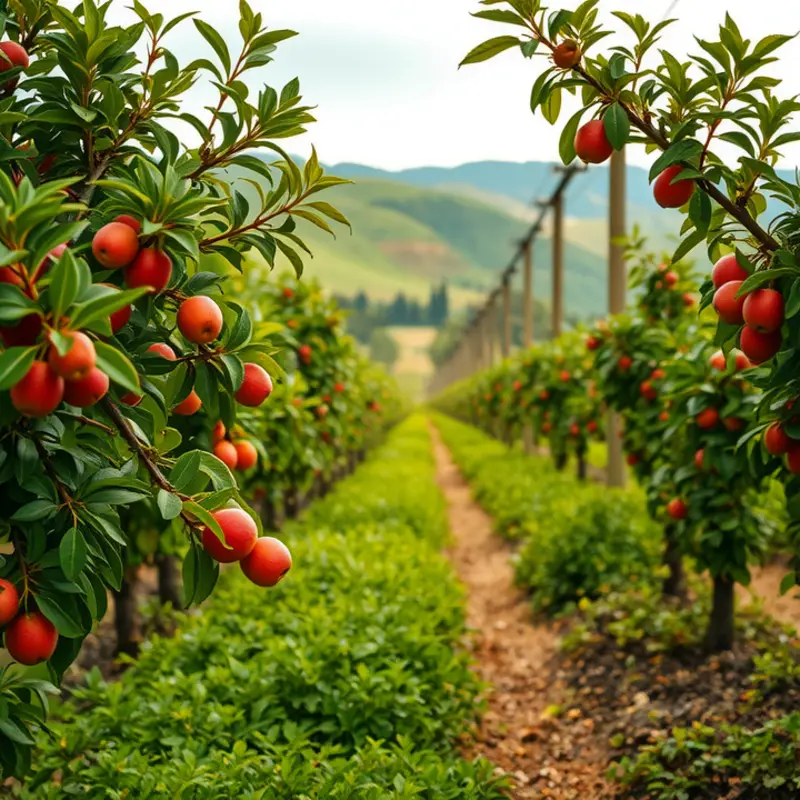Cooking without alcohol can be a challenge, especially when it comes to using traditional cooking wines. However, a variety of non-alcoholic options exist that can enhance your dishes, bringing out rich flavors and aromas. This guide is designed for home cooks and dietary-conscious individuals, providing practical ingredient alternatives, easy substitutions, and flexible cooking solutions that will keep your meals delicious and satisfying without compromising your lifestyle choices.
Understanding Non-Alcoholic Cooking Wines

Non-alcoholic cooking wines are crafted to provide the rich flavors and aromas characteristic of traditional cooking wines without the alcohol content. These wines serve various functions in cooking, enhancing taste, deglazing pans, and tenderizing proteins. They are designed to cater to health-conscious individuals and those seeking alternatives to alcohol-driven ingredients.
When choosing a non-alcoholic cooking wine, consider its purpose in the recipe. Aim to match the flavor profile of the dish with the wine’s characteristics. A red non-alcoholic wine may complement hearty stews or rich tomato-based sauces, while a white one might suit lighter poultry or seafood dishes.
Diverse options exist, each with unique flavor notes. Red non-alcoholic wines often bring rich, fruity undertones that mimic the warmth and earthiness of full-bodied reds. They are ideal for dishes where robust notes are needed, such as in beef bourguignon or winter stews.
White non-alcoholic wines tend to possess crisp, citrus-forward flavors, making them perfect for sautéing vegetables or crafting a vibrant sauce to pair with fish. Their subtlety ensures they enhance without overpowering, maintaining the integrity of delicate dishes.
For dishes requiring a sweet touch, consider non-alcoholic dessert wines. These offer a syrupy sweetness accentuated by stone fruit and honey notes. Use them sparingly in reductions or glazes to add depth to desserts or pork dishes.
Beyond flavor compatibility, consider storage. Like traditional wines, non-alcoholic varieties should be stored properly to preserve quality. Sealing the bottle tightly and storing it in a cool, dark place extends its shelf life. For more on safe storage practices, explore eco-smart kitchen storage.
Non-alcoholic cooking wines also support those enjoying mindful and conscious eating habits. They allow for the depth of flavor that wine imparts while aligning with personal health goals. Moreover, they provide peace of mind to cooks serving diverse audiences, ensuring inclusivity of meals.
In conclusion, selecting the right non-alcoholic cooking wine hinges on understanding both the recipe requirements and the unique attributes of the wine itself. With this knowledge, cooks can thoughtfully enhance their culinary creations without alcohol, achieving flavorful and satisfying results.
Top Substitutes for Cooking Without Alcohol

Creating delightful dishes without the use of traditional cooking wines is both achievable and beneficial for health-conscious cooks. Whether you’re accommodating dietary restrictions or simply seeking non-alcoholic alternatives, the following substitutes offer practicality and depth of flavor.
1. Vinegar-Based Substitutes
Vinegars are a versatile choice for mimicking the acidity and complexity of wine. Red and white wine vinegars are common options, but even a modest splash of apple cider or balsamic vinegar can work wonders. For those aiming for a less tangy profile, consider diluting the vinegar with water or a mild broth to create a balanced marinade or sauce.
2. Broths and Stocks
A rich vegetable or chicken broth can serve as an excellent base. Not only does this provide a savory depth, but it also enhances the dish’s nutritional profile. To elevate the flavor, consider adding a pinch of herbs or a squeeze of lemon, echoing the nuances wine typically adds. Practical Ingredient Batching offers insights into creating your own broths at home efficiently.
3. Juices as Flavor Boosters
Certain fruit juices mimic the acidity and sweetness of wines effectively. Grape juice is an obvious choice, but cranberry or pomegranate juice can also introduce a bold flavor to recipes. Opt for fresh or low-sugar varieties to maintain a healthy ingredient list without excessive sweetness.
4. Herb and Spice Mixtures
Crafting herb and spice blends allows for an expanded flavor palette. Combine aromatic herbs like rosemary, thyme, and bay leaves with spices such as black pepper or cloves. When infused into broths, these mixtures can take on a role traditionally filled by wine.
5. Non-Alcoholic Wines
For those wishing to retain the characteristics of wine closely, non-alcoholic versions are increasingly available. When selecting these, check that the product has an authentic wine flavor, as some may differ significantly in taste.
6. Lemon or Lime Juice
Citrus juices provide ample acidity to recipes, a primary function of cooking wine. Use these sparingly with robust dishes, such as fish or poultry, where the citrus zestiness can highlight other flavors.
Tips for Use in Recipes
- Balance Acidity: Substitute in increments, tasting as you go. Overpowering a dish with acidity can counteract its natural flavors.
- Complement Ingredients: Choose substitutes that resonate with the meal’s natural profile. For instance, a hearty beef stew may benefit more from a broth-based substitute rather than juices.
- Experiment: Encourage a sense of creativity and experimentation. Combining juices and herbs, or infused vinegars, can lead to delightful, unexpected results.
Navigating the realm of non-alcoholic cooking wines enhances not only the health profile of your dishes but also the creative aspects of culinary arts. By considering these options, you ensure flavorful dishes while maintaining a commitment to healthier cooking practices.
Final words
Choosing non-alcoholic cooking wines allows you to enjoy flavorful meals without sacrificing your dietary preferences. Whether you opt for commercial alternatives or create homemade versions from vinegars, juices, or broths, the key is to complement your dishes effectively. Remember to experiment with different flavors and find what works best for your taste. Cooking should be an enjoyable experience, and with these non-alcoholic solutions, you can explore a new dimension of culinary creativity while staying true to your health-conscious lifestyle.







